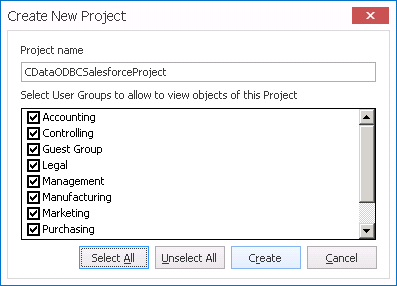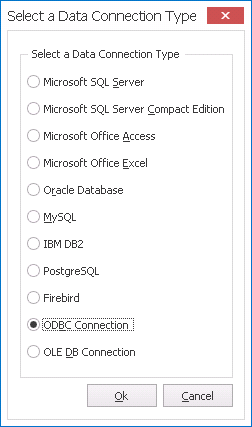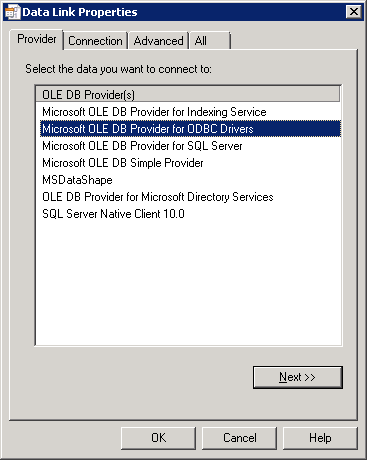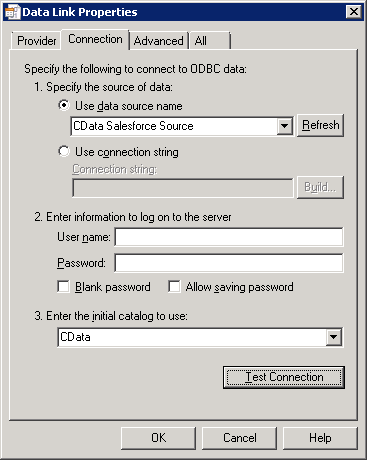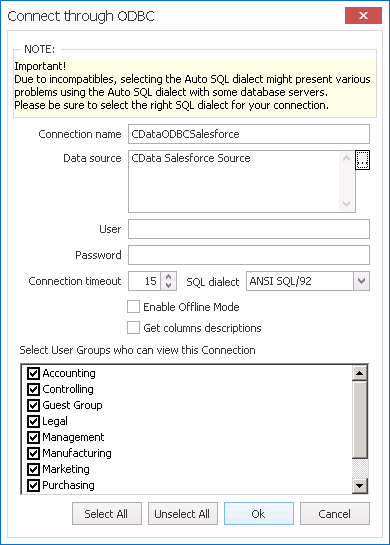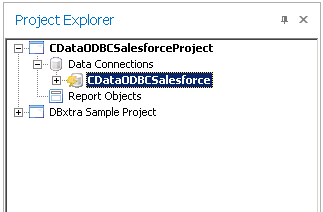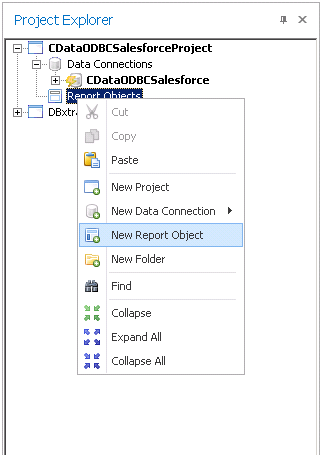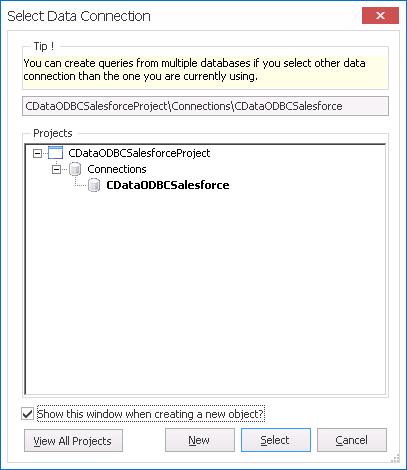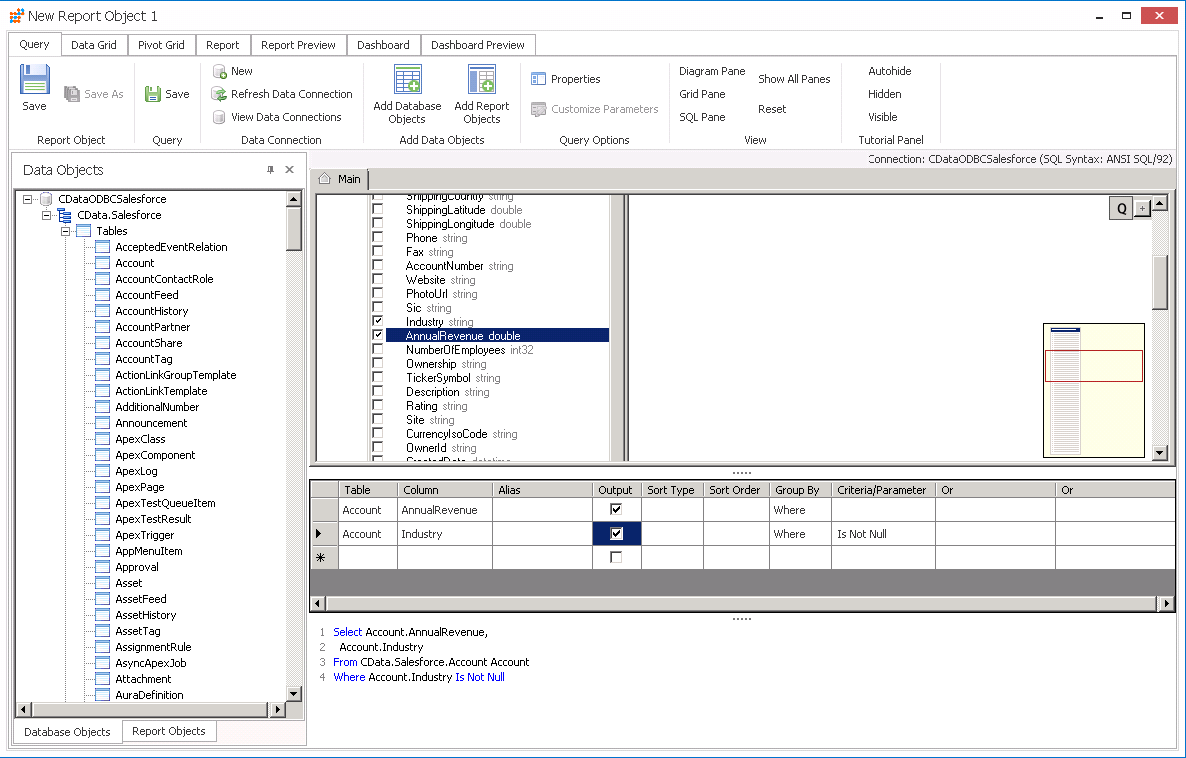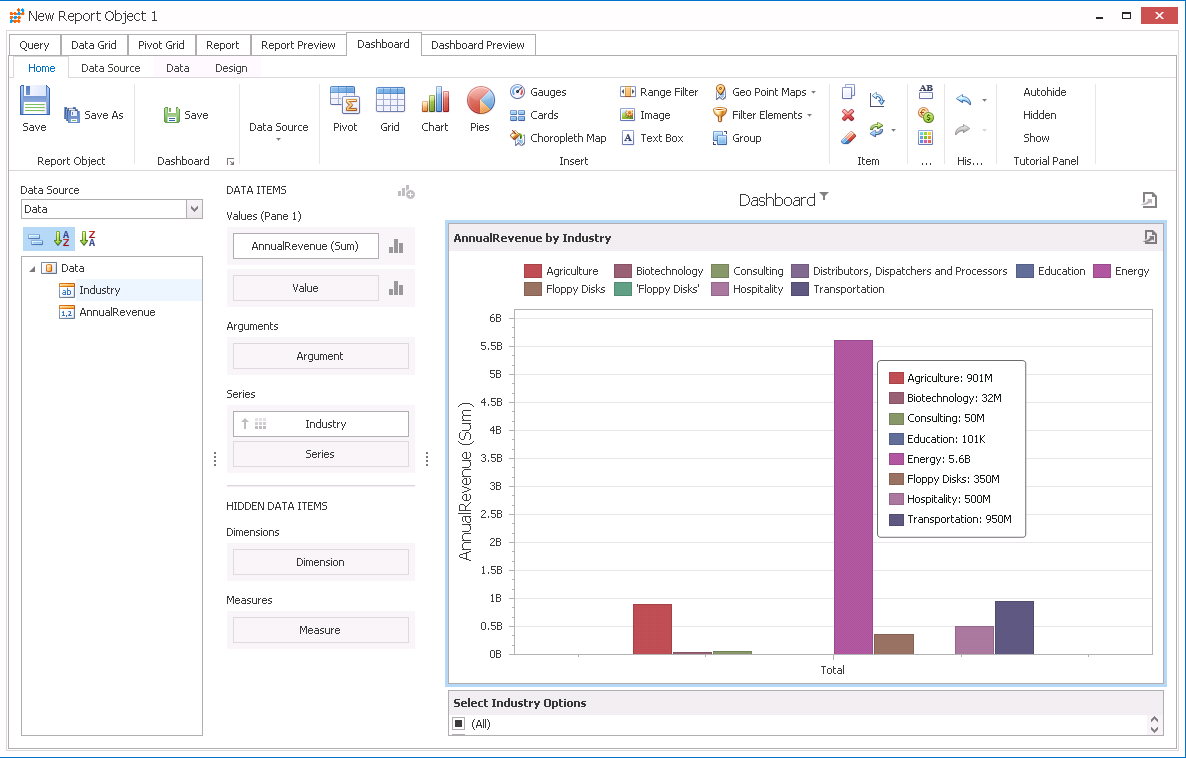Discover how a bimodal integration strategy can address the major data management challenges facing your organization today.
Get the Report →Build Dashboards with SQL Analysis Services Data in DBxtra
Create dynamic dashboards and perform analytics based on SQL Analysis Services data in DBxtra.
The CData ODBC Driver for SQL Analysis Services enables access to live data from SQL Analysis Services under the ODBC standard, allowing you work with SQL Analysis Services data in a wide variety of BI, reporting, and ETL tools and directly, using familiar SQL queries. This article shows how to connect to SQL Analysis Services data as a generic ODBC Data Provider and create charts, reports, and dashboards based on SQL Analysis Services data in DBxtra.
Connect to SQL Analysis Services Data
- If you have not already done so, provide values for the required connection properties in the data source name (DSN). You can configure the DSN using the built-in Microsoft ODBC Data Source Administrator. This is also the last step of the driver installation. See the "Getting Started" chapter in the Help documentation for a guide to using the Microsoft ODBC Data Source Administrator to create and configure a DSN.
To connect, provide authentication and set the Url property to a valid SQL Server Analysis Services endpoint. You can connect to SQL Server Analysis Services instances hosted over HTTP with XMLA access. See the Microsoft documentation to configure HTTP access to SQL Server Analysis Services.
To secure connections and authenticate, set the corresponding connection properties, below. The data provider supports the major authentication schemes, including HTTP and Windows, as well as SSL/TLS.
-
HTTP Authentication
Set AuthScheme to "Basic" or "Digest" and set User and Password. Specify other authentication values in CustomHeaders.
-
Windows (NTLM)
Set the Windows User and Password and set AuthScheme to "NTLM".
-
Kerberos and Kerberos Delegation
To authenticate with Kerberos, set AuthScheme to NEGOTIATE. To use Kerberos delegation, set AuthScheme to KERBEROSDELEGATION. If needed, provide the User, Password, and KerberosSPN. By default, the data provider attempts to communicate with the SPN at the specified Url.
-
SSL/TLS:
By default, the data provider attempts to negotiate SSL/TLS by checking the server's certificate against the system's trusted certificate store. To specify another certificate, see the SSLServerCert property for the available formats.
You can then access any cube as a relational table: When you connect the data provider retrieves SSAS metadata and dynamically updates the table schemas. Instead of retrieving metadata every connection, you can set the CacheLocation property to automatically cache to a simple file-based store.
See the Getting Started section of the CData documentation, under Retrieving Analysis Services Data, to execute SQL-92 queries to the cubes.
When you configure the DSN, you may also want to set the Max Rows connection property. This will limit the number of rows returned, which is especially helpful for improving performance when designing reports and visualizations.
-
HTTP Authentication
- Open the DBxtra application and in the New menu click Project and name the Project.
![Creating a New Project.]()
- Select ODBC Connection as the Data Connection Type.
![Creating an ODBC Connection.]()
- Click the browse option () for the Data Source.
- In the Data Link Properties window, select Microsoft OLE DB Provider for ODBC Drivers on the Provider tab.
![Select the Provider]()
- On the Connection tab, select the Data Source Name and the initial catalog to use (CData).
![Select the Provider]()
- Name the Connection and select the appropriate User Groups.
![Connection name and User Groups]()
- Double-click the Connection from within the Project to connect to the data.
![Connecting to the data.]()
Create a Dashboard with SQL Analysis Services Data
You are now ready to create a dashboard with SQL Analysis Services data.
- Right-click Report Objects under the Project and select New Report Object.
![Creating a Report Object for the Project]()
- In the new Report Object, click the link to create the Query.
- In the Select Data Connection window, select the newly created data connection.
![Select Data Connection]()
- On the Query tab, expand the connection objects and select the Tables, Views, and specific columns you wish to include in your dashboard. You can specify search requirements and even create complex queries which include JOINs and aggregations.
![Selecting the data/building the query.]()
- On the Dashboard tab, select the visualizations and features for your dashboard. Assign the data values from the query to the appropriate fields for the Dashboards items (Values, Series, etc.)
![Building the Dashboard.]()
With a new Dashboard created, you are ready to begin analysis of SQL Analysis Services data. Thanks to the ODBC Driver for SQL Analysis Services, you can refresh the Dashboard and immediately see any changes made at the source. In the same way, you can create and view Reports with live, up-to-date SQL Analysis Services data.






